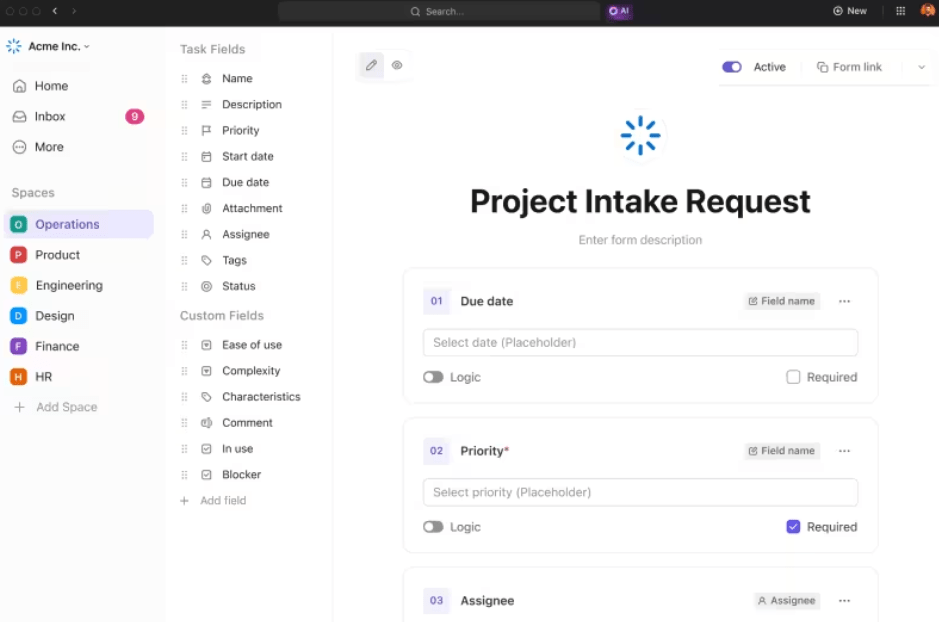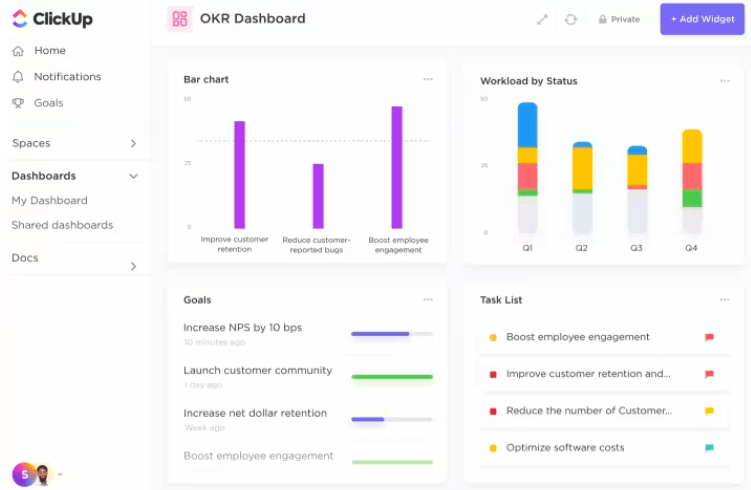How to Build an Agile Performance Management Strategy

Sorry, there were no results found for “”
Sorry, there were no results found for “”
Sorry, there were no results found for “”
Agile performance management solves a common dilemma—how do you effectively evaluate and improve your team’s performance in a rapidly evolving workspace?
Agile performance management focuses on giving timely feedback, having frequent check-ins, and setting future career development goals for employees. This approach emerged in response to the growing need for flexibility and adaptability in the workplace and is inspired by methodologies used in agile project management, particularly agile scrum.
The agile performance management system replaces traditional performance management systems’ lengthy goal-setting sessions and infrequent feedback loops. It creates continuous feedback and collaborative communication. As a result, there’s better goal alignment that empowers your employees.
Let’s unpack the agile approach to performance management.
Relying solely on annual appraisals might not be adequate in a dynamic and fast-paced environment. Tailored for the modern workplace, the agile performance management model encompasses the following elements:
| Pro-tip: Utilize comprehensive performance management tools to seamlessly manage performance and facilitate agile workflows. |
Agile performance management differs from traditional performance management approaches in many ways. Here’s a snapshot of the key differences:
| Feature | Traditional performance management | Agile performance management |
| Feedback | Annual, one-sided | Continuous, two-way |
| Check-ins | Infrequent, lengthy | Frequent, short |
| Goals | Vague, yearly | SMART, collaborative |
| Feedback source | Manager-centric | 360-degree |
| Focus | Past performance | Development opportunities, future growth |
With a new performance management approach like agile, it’s crucial to weigh the pros and cons so you can navigate the implementation process smoothly.
Let’s explore the benefits that make the agile performance management system appealing, then address some potential drawbacks and how to overcome them.
Benefits of implementing agile performance management:
Potential drawbacks and how to mitigate them:
Building an agile performance management system can set your organization up for success in a volatile marketplace. However, integrating it into your organization can be challenging, especially if you’re moving from a more traditional performance management process.
Here are key steps to ensure a smooth implementation and avoid disruption:
Agile performance management is a continuous conversation focused on development. Starting small allows for a controlled environment to:
To effectively launch your pilot program, you must also understand your organization’s current performance management practices. Here’s how to gather valuable information:
Employee surveys
Develop anonymous surveys to gauge employee sentiment toward the performance management objectives in the current management system.
Ask questions such as:
Manager focus groups
Organize focus groups with managers to discuss their challenges with the current system.
Here are some prompts:
Analyze feedback from these sources and tailor your pilot program to specific needs. This increases the likelihood of a successful implementation and overall positive experience within the agile organization.
Implement the right tools to ensure the ongoing success of your performance data management system. Features to consider include:

ClickUp’s Agile Project Management platform offers many agile principles, methodologies, and features for effective agile performance management.
Objectives and key results (OKRs) are a cornerstone of the agile performance management process. They are a framework for defining clear and measurable goals for individuals, teams, and the entire organization.
Objectives
Set ambitious, qualitative descriptions of what you want to achieve within a specific timeframe (usually a quarter or a year). They should be inspiring, challenging, and time-bound.
Example: ‘Become the industry leader in customer satisfaction by Q4.’
Key results
Define specific, measurable metrics that track progress toward achieving the objective. They should be clearly defined, verifiable, and have a target value or outcome.
Example: ‘Increase Net Promoter Score (NPS) from 60 to 70 by Q4’ or ‘Reduce customer churn rate by 5% by Q4’.
Here’s a breakdown of how to implement OKRs within your agile performance management (APM) system:
ClickUp’s OKRs Template is an excellent planning and goal-setting tool for individuals and teams. Use it to outline the basic structure for OKR development across functional areas within your organization. Then, you can easily break huge goals into achievable OKRs and monitor progress at a glance using the custom statuses in the OKR List.
Traditional performance reviews often rely solely on a manager’s perspective. The agile system of annual performance reviews for management takes a more holistic approach to traditional performance reviews. 360-degree feedback incorporates insights from multiple sources, providing a more well-rounded picture of an employee’s performance and strengths.
Start by introducing self-assessment and peer feedback during check-in discussions. Gradually integrate manager feedback and ongoing development conversations, and consider incorporating customer feedback depending on the employee role.
Encourage framing the whole feedback process as a tool for growth and future development, not criticism. Consider anonymous peer feedback initially to encourage honest responses. Let trust build and gradually shift toward identifiable feedback.
Provide training on delivering and receiving constructive performance feedback to train managers to ensure a positive experience for everyone involved.

ClickUp Forms is useful for gathering feedback from various sources, such as colleagues, managers, and even clients.
This tool lets you:
Agile performance management thrives in a culture that encourages continuous learning and improvement. Tracking everyday performance metrics and offering well-designed incentives are essential for driving continuous performance management and the ongoing feedback cycle.
Tracking performance: Guiding and motivating
Incentives: Recognizing and reinforcing
ClickUp’s Performance Review Template lets you collaborate on and track employee performance reviews, helping you reward and boost organizational performance.
This template creates a continuous feedback loop through features such as:
Continuous improvement is central to agile performance management methodologies. Once you have actionable performance metrics, start making adjustments as needed.
| Pro tip: Test any significant changes you plan to make on a smaller scale first. This allows you to identify and address any unforeseen challenges before rolling them out to the entire organization. |

ClickUp’s Project Management platform helps management and HR teams address and implement end-to-end employee performance and management, from gathering and providing feedback to creating a plan and strategy to improve employee performance.
This all-in-one platform for project and performance management helps you:
Implementing an agile approach to the performance management process is a surefire path to creating a culture of continuous learning, development, and open communication. The benefits ripple outwards, leading to improved collaboration, goal alignment, and organizational success.
As businesses evolve, agile performance management will become even more crucial in building cohesion across geographies. With the rise of AI and data analytics, we expect to see more tech-driven solutions for agile performance management.
ClickUp’s ability to function as both an agile project management tool and a performance management platform positions it perfectly for the future of work. By embracing agile transformation and leveraging ClickUp, organizations can empower their teams, achieve goals more effectively, and gain a significant competitive edge.
Sign up to ClickUp today for free and build your agile performance management strategy today!
Traditional performance management focuses on annual reviews and rigid goal setting, while the agile performance management model emphasizes continuous feedback and adaptability to changing goals and business priorities.
The goal of agile performance management is to create continuous improvement, enhance communication skills and collaboration, and empower employees to take ownership of their development.
The key point of agile is that agile organizations embrace flexibility, transparency, and collaboration to achieve organizational goals efficiently and effectively adapt organizational capabilities to changing circumstances.
© 2025 ClickUp